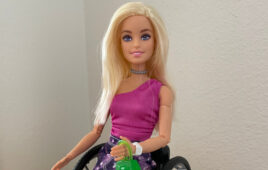
GIRL DRESSED UP: ISTOCKPHOTO.COM/IDEABUG
For much of human history, children and adolescents were treated as younger, smaller versions of adults. Conventional wisdom in those times said the only differences between adults and juveniles was that children were physically smaller.
Now, we know there are many differences between children and grownups, and that ignoring those differences can lead to less-than-optimal outcomes.
That’s true for all sorts of product design, including wheelchair cushions for kids with significant mobility impairments.
How Kids Are Different
Jean Sayre, MSOT, COTA/L, ATP, CEAC, is VP of Quantum R&D Clinical Development for Quantum Rehab and Pride Mobility Products. As a seating specialist, she’s very familiar with wheelchair cushions designed with carved-out “wells” that are filled with gel inserts, air cells or foams of different stiffnesses.
As Stealth Products developed its upcoming pediatric line of cushions, Sayre said the design team focused on the innate differences between adult and child users.
“In the past, some people have taken adult cushions and made them into pediatric sizes, but they leave that well as an adult-sized well,” Sayre said. “What we found is that we can’t use our adult well for the pediatric population. So we have to create a different cushion. What we’re going to be doing [with Stealth’s upcoming line] is to make it appropriate for the pediatric population.”
Growing Up Fast
“[Children] grow at a fast rate of speed,” she said. “So we have to accommodate the growth factor, as well. As adults, we might grow a little bit out with redundant tissue, but our ITs [ischial tuberosities] and bone structure are pretty much set. We have to accommodate the pediatric bone structure for growth because they might start out with a 2″ span of the ITs, but by the time they’re teens, some of them have reached almost their full adult size. It depends on the person. Some children mature faster than others.”
Understanding the proportionate sizes of children, how they grow, and when they will grow can therefore be key to designing optimally functional wheelchair seat cushions for kids.
“They are different,” Sayre note of pediatric clients and their body proportions. “And that doesn’t take into account the co-morbidities of their diagnoses.”

